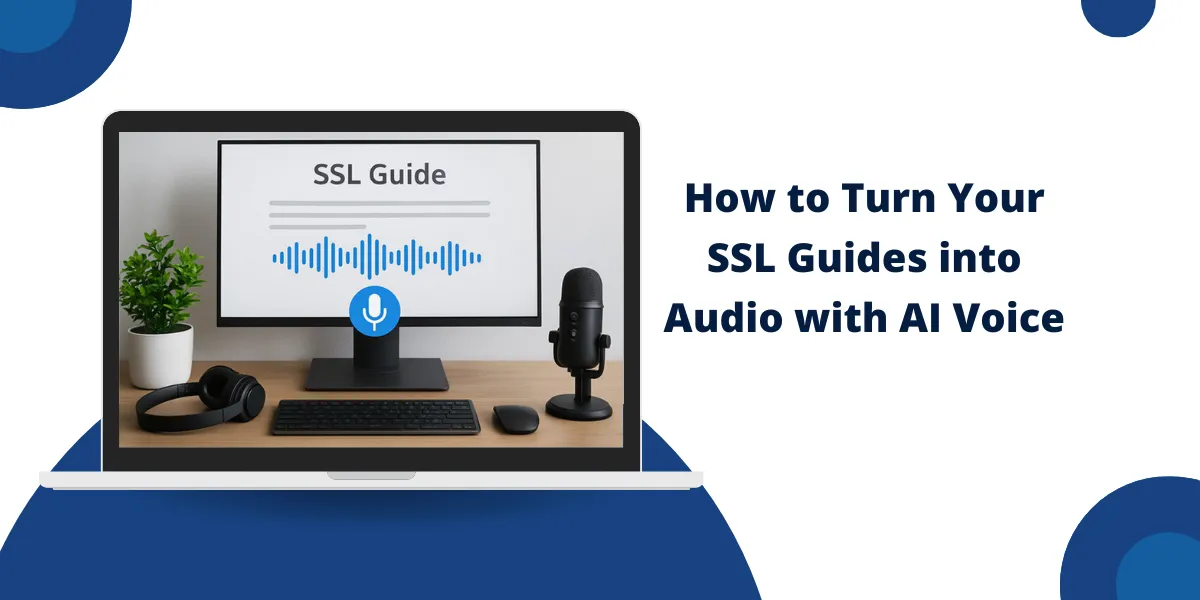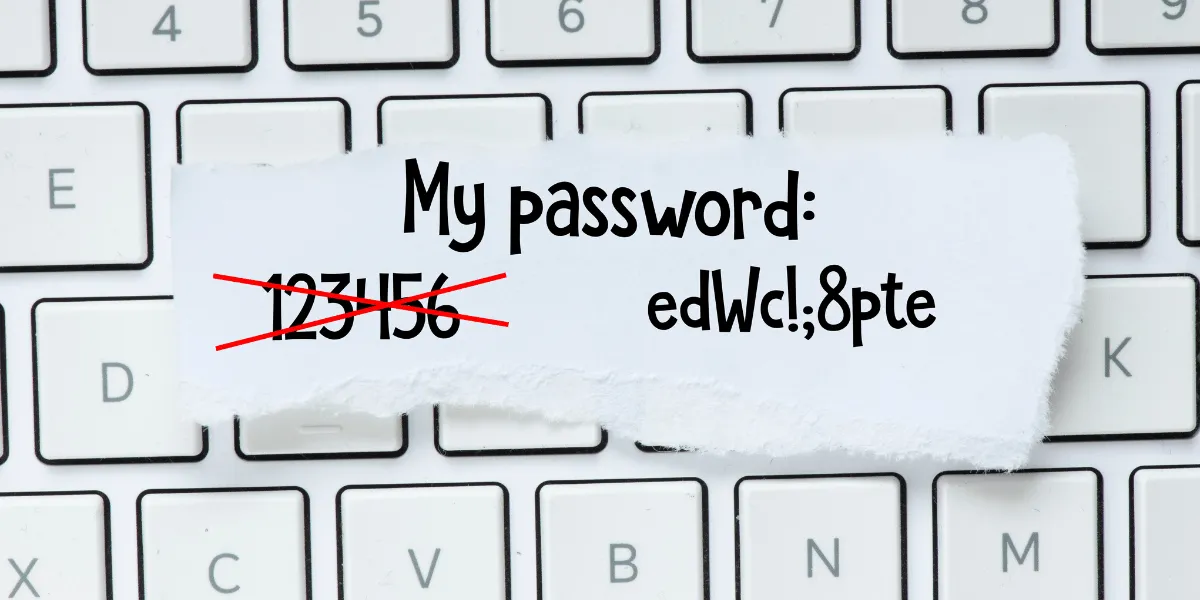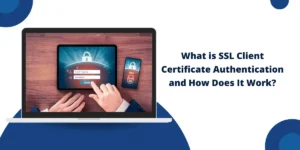How AI Voice Brings SSL Guides to Life
Current text-to-speech is not the robotic drone of a decade past. It’s driven by machine learning-based models that were trained on huge speech databases so that the generated speech sounds natural, with phrasing and rhythm that are almost like a human reader.
Practically speaking, that means you can take a written SSL guide and create a voice-based version that sounds crisp and professional. Most tools allow you to control speed, pitch, emphasis, and even define unique pronunciations for words like cipher suite or Subject Alternative Name. That is what people refer to when they discuss AI voice for documentation and training.
The advantage for SSL subjects is simple. You maintain technical precision and introduce standardized delivery, which aids the listeners in following detailed steps without ambiguity.
Prepare your SSL guide for voice
- Make the script tighter. Brevify sentences. One thought per sentence. Eliminate stacked clauses and substitute with good transitions.
- Pre-load context. Open each section by declaring the objective. For instance, declare what a CSR is before demonstrating how to create one.
- Clump procedures. Procedures such as creating a private key, creating a CSR, and finishing domain control validation should be clumped neatly, each with a short explanation.
- Define acronyms only once. The first time you mention TLS or OCSP, say it fully. Then use the short form afterwards.
- Mark pauses. Include notes where a slight pause enhances the effect, such as after a step or a warning. This is simple to manage later with SSML.
Turn your SSL Content into Audio Sequentially
- Select a text-to-speech service. Opt for natural, human-quality narration, custom pronunciation support, varied languages, and output formats such as MP3 or WAV.
- Select a neutral, professional voice. SSL content gains from soothing delivery. Steer clear of obtrusively dramatic or playful tones.
- Set the pace slightly slower than conversational. Provide listeners with time to absorb terms such as certificate authority, handshake protocol, and key exchange.
- Apply SSML to refine. SSML allows you to control rate, pitch, volume, and add pauses. Insert phonetic cues so acronyms and product names come out right.
- Create a brief sample. Pilot a two-minute segment that contains at least one acronym, one command, and one multi-step instruction.
- Check on usual devices. Inspect clarity on laptop speakers, earbuds, and a car phone. Turn down the volume and slow down the speed if the song sounds hurried or muddy.
- Create the complete track. Keep parts modular. Export individual files per chapter so customers can immediately access topics such as installation, renewal, or troubleshooting.
- Export and embed. Employ a basic player at the top of your article and give a downloadable version. Add total runtime and a brief list of sections.
Where to begin in your SSL library?
- Beginner explainers: What is an SSL certificate, how HTTPS encrypts data in transit, and why browsers display a padlock.
- How-Tos: Create a CSR, install the certificate on Apache, Nginx, or IIS, and set up intermediate certificates.
- Troubleshooting: Resolving mixed content, solving handshake failures, renewing ahead of time, and verifying the chain.
- Security posture: Protocol selection, cipher suites, TLS 1.3 advantages, HSTS fundamentals, and revocation techniques such as OCSP stapling.
Why is audio useful for SSL documentation?
- Accessibility: Audio is accessible to visually impaired people and anyone who doesn’t like reading.
- Multitasking: Your listeners can learn your TLS and certificate nuggets on a commute or while doing routine work.
- Comprehension: Listening to accurate pronunciations for TLS, OCSP, CSR, and PKI terms minimizes resistance.
- Retention: Proper pacing with pauses at the important steps makes concepts stick better.
- Repurposing: The same narration can continue on your blog, a knowledge base, internal onboarding, or a short podcast feed for customers.
Final Thoughts
People turn to SSL guides for simplicity, not theatrics. Sound assists in providing that simplicity in a format that accommodates more lives. With high-quality synthetic narration, accurate pacing control, and easy SSML markup, your SSL tutorials can turn into lucid oral walkthroughs rivaling the precision of your written tutorials.
Begin with your most viewed explainer, create a tight audio version with chapter markers and a transcript, and post it with the article. You will render difficult security subjects easier to learn, and you will meet readers where they are, headphones on and ready to listen.

Priya Mervana
 Verified Web Security Experts
Verified Web Security Experts
Priya Mervana is working at SSLInsights.com as a web security expert with over 10 years of experience writing about encryption, SSL certificates, and online privacy. She aims to make complex security topics easily understandable for everyday internet users.



